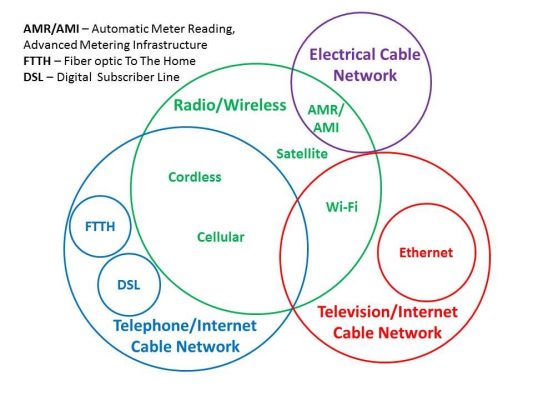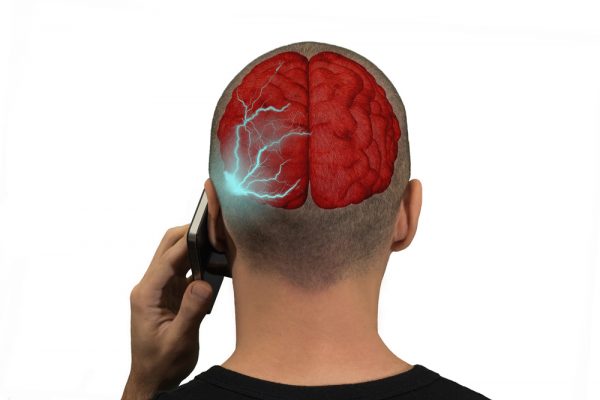 Cellphones are unhealthy at any speed, and the speed is increasing year in and year out with generational advances in cellular technology. Beginning in 1973, with the first-generation (1G) offering two-way analog radio telephones, to today, with fourth-generation (4G) two-way digital radio, Internet communication devices are not really telephones and not really computers. They are cameras and photo albums, real-time maps with audio directions, pocket planners, wallets, weather forecasters, reference materials (e.g., How do I change my tire?) at your fingertips, home security monitors, email boxes, radios and mp3 players, televisions, and sometimes used for texting and phone calls. Many people would be hard-pressed to live without one.
Cellphones are unhealthy at any speed, and the speed is increasing year in and year out with generational advances in cellular technology. Beginning in 1973, with the first-generation (1G) offering two-way analog radio telephones, to today, with fourth-generation (4G) two-way digital radio, Internet communication devices are not really telephones and not really computers. They are cameras and photo albums, real-time maps with audio directions, pocket planners, wallets, weather forecasters, reference materials (e.g., How do I change my tire?) at your fingertips, home security monitors, email boxes, radios and mp3 players, televisions, and sometimes used for texting and phone calls. Many people would be hard-pressed to live without one.
Unfortunately, this modern-day marvel is also increasing our exposure to artificial electromagnetic radiation to astronomical levels. Radio waves were discovered in the early 1800s, and then came radio broadcasting starting with the first transmission in 1906, and then the first radio station in 1920. Two-way radio devices were introduced during WWII as walkie-talkies. Radar also came into being during WWII, using higher frequencies. The impact to biology was not a consideration until radar operators, a very highly skilled resource, became injured. Health studies began, not with trying to understand the danger, but to find the acceptable levels of exposure; thus, the thermal versus non-thermal debate ever since. The telecommunications industry is regulated only on the thermal exposure component, which is the well-known specific absorption rate (SAR) limits. The non-thermal exposure findings, since the radar investigation, have been relegated to the closet.
You can download this fact sheet by clicking here.
The EMR from cell phones, cellular antennas, Wi-Fi, etc., is digital, pulsed, non-ionizing radiation. This form of radiation may be the most pernicious of all the artificial EMR in our environment, not including the accepted dangerous ionizing radiation of nuclear radioactivity or X-rays. Current science links autism, Alzheimer’s disease, cancer (i.e., brain, breast, testicular), as well as insomnia, lower sperm counts, and DNA damage. But, like the fight against the tobacco industry in 1990s, the telecommunications industry is using the “merchants of doubt” strategy to obfuscate the reality that cell phones emit unhealthy radiation and may be outright dangerous with long-term exposure.
The telecommunications industry is a behemoth. They are already on a trajectory to increase speeds and bandwidth of the technology to the fifth generation (5G). Experts project that there will be over 22 billion (with a B) devices in use by 2020, including all smartphones, tablets, and PCs accessing the Internet. Much of this access is by cellular telephones and the rest is through non-telephone devices, but the world of Internet access is complex. Dr. Timothy Schoechle explained in his paper, Reinventing Wires,published in 2018, how there is a triopoly of a power struggle between the cable company (Comcast) and cellular companies (AT&T and Verizon). U.S. government regulations are partially, maybe wholly, to blame and all the while the health impacts, ever growing, are taking a back seat while the triopoly of power driven by short-term profits and market share are battling it out. The Telecommunications Act of 1996 regulated wired phone service while making wireless and cable broadband services unregulated. Thus, Verizon and AT&T want to move all their phone services to more profitable wireless, and have stopped pursuing fiber optic cables to the home. The entire backbone of both the cellular network and the broadband network are fiber optic. Fiber optic cable is far faster than wireless will ever be.
Mobile telephony was intended as an extension to the existing telephone network, not as a replacement. This idea has gone awry because of corporate greed. This is mostly true in the United States because of the errant deregulation policy set in 1996. We may not be able to stop the behemoths from getting their way, but it is likely that the collision course of radio Internet access to health implications and the unrelenting drive for profit from radio Internet access will lead to a reassessment. Eventually, the public will have veto power by choosing not to buy the cell phone and demanding fiber optic access.
In the meantime, being informed and taking precautionary actions are justified. The Building Biology Institute recommends limiting exposure to artificial EMR whenever feasible, especially during sleep, and wherever children, pregnant women, and frail people spend a lot of time.
Want to learn more on this issue? Click the comprehensive online course, here below.


